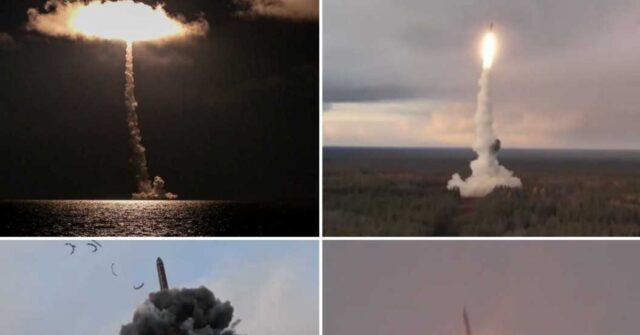In recent developments, Russian President Vladimir Putin has emphasized the importance of maintaining modern strategic forces, especially amidst escalating geopolitical tensions. During a large-scale nuclear exercise, Russia reportedly simulated a “massive nuclear strike,” utilizing land-launched missiles, submarine launches, and strategic bombers. Defense Minister Andrei Belousov outlined that the maneuvers were intended to prepare for potential nuclear retaliation in response to an enemy strike, underscoring the Kremlin’s intent to deter Western involvement in geopolitical conflicts, particularly the ongoing invasion of Ukraine. These exercises send a clear message to the West, intending to dissuade any escalatory actions from NATO and its allies.
Putin, while expressing a desire to avoid a new arms race, asserted that Russia would ensure its nuclear arsenal remains sufficient and modern. Recent advancements in launch systems and missile technologies are aimed at improving response times and evading missile defense systems. Putin acknowledged that while nuclear weapons remain a last resort, ongoing technological developments are essential in the current international landscape. The Russian leader highlighted the necessity for continuously updated strategic forces to counter growing external threats, reiterating a commitment to bolster the country’s defensive capabilities.
The large-scale tests took place across several geographic locations in Russia, including the north-west and east, with significant maneuvers occurring at the Plesetsk state test cosmodrome and the Kura test site in Kamchatka. Notably, the exercise involved the intercontinental ballistic missile (ICBM) Yars, launched over a distance of approximately 3,500 miles. Additionally, submarine-launched ballistic missiles such as Sineva and Bulava were tested from different regions, demonstrating Russia’s extensive naval capabilities. Publicly released footage displayed various strategic bombers, such as the Tu-95MS, participating in these extensive military preparations.
In the broader geopolitical context, the alignment of North Korea and Russia has drawn attention, particularly concerning North Korea’s impending nuclear and missile tests. South Korea raised concerns regarding this collaboration amidst the ongoing Ukraine conflict, highlighting an evolving strategic partnership that may further destabilize regional and global security architectures. Such alignments suggest a shift in international relations, wherein countries like North Korea and Russia bolster their military capabilities concurrently, prompting security dilemmas for neighboring states.
The backdrop to these exercises is also marked by recent alterations in Russia’s nuclear doctrine. In early 2023, President Putin announced a significant shift in policy, indicating that aggression against Russia by non-nuclear states, particularly with support from nuclear powers, could provoke a joint response. This doctrine expands the rationale for employing nuclear weapons beyond conventional military engagements, suggesting that even non-nuclear threats might warrant a nuclear reaction if they pose a critical threat to Russian sovereignty. Such assertions heighten the stakes in international relations, increasing the potential for miscalculations or escalatory actions in the event of military confrontations with Western powers.
Simultaneously, the West has been exercising its nuclear deterrent capabilities, as seen in NATO’s recent Operation Steadfast Noon. This annual drill involved extensive coordination across multiple military bases, with a significant deployment of personnel and aircraft from various nations, emphasizing the bloc’s commitment to maintaining readiness in the face of potential nuclear threats. The juxtaposition of NATO’s exercises alongside Russia’s nuclear drills indicates an increasingly polarized security environment, with both sides signalling their preparedness while engaging in a strategic game of deterrence. As this arms race continues to unfold, the international community watches closely, cautious of the implications for global peace and security in such a volatile landscape.

